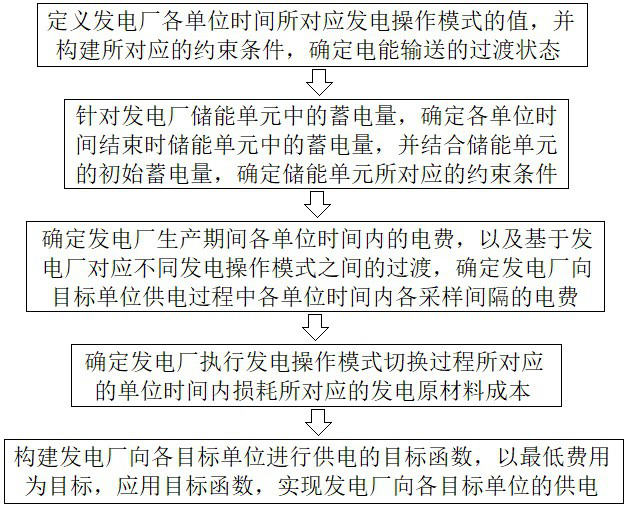Comprehensive energy system demand response method based on dynamic process optimization
An integrated energy system, demand response technology, applied in information technology support systems, resources, data processing applications, etc., can solve problems such as not considering energy consumption
- Summary
- Abstract
- Description
- Claims
- Application Information
AI Technical Summary
Problems solved by technology
Method used
Image
Examples
Embodiment Construction
[0049] The specific implementation manners of the present invention will be further described in detail below in conjunction with the accompanying drawings.
[0050] The present invention designs an integrated energy system demand response method based on dynamic process optimization, such as figure 2 As shown, it is used for the power plant with energy storage unit to realize the optimal power supply of the power plant to each target unit. In practical applications, such as figure 1 As shown, the following steps A to E are specifically performed.
[0051] Step A. Based on the different power generation operation modes adopted by the power plant according to different users, different natural conditions, and national regulation and control requirements within a certain period of time, for each power generation operation mode m corresponding to the power plant, m∈M, M Indicates the number of power generation operation modes corresponding to the power plant, and defines the va...
PUM
 Login to View More
Login to View More Abstract
Description
Claims
Application Information
 Login to View More
Login to View More - R&D
- Intellectual Property
- Life Sciences
- Materials
- Tech Scout
- Unparalleled Data Quality
- Higher Quality Content
- 60% Fewer Hallucinations
Browse by: Latest US Patents, China's latest patents, Technical Efficacy Thesaurus, Application Domain, Technology Topic, Popular Technical Reports.
© 2025 PatSnap. All rights reserved.Legal|Privacy policy|Modern Slavery Act Transparency Statement|Sitemap|About US| Contact US: help@patsnap.com



